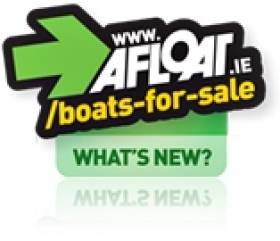Displaying items by tag: loki
#offshore – The Reichel-Pugh 63 Loki, which started life in 2009 under Stephen Ainsworth's ownership racing to many wins out of Sydney in the top Australian offshore classics, has continued her successful career under her new name of Lucky and the ownership of American Bryon Ehrhart writes W M Nixon.
In the Ainsworth ownership, Loki was under the command of Gordon Maguire, originally of Howth. For three years , she was clear ahead as top Australian boat, winning the Rolex Sydney-Hobart Race of 2011, and coming second overall and winning her class in the 2012 race, in addition to achieving other successes including many combined line honours/overall wins in the busy Australian offshore programme along the east coast and north towards the resort ports of the Great Barrier Reef.
Stephen Ainsworth had always said he would give racing at this level his undivided attention for five years, and then he'd exit the scene. He did that very thing, so for a couple of years now Gordon Maguire has been skipper for Matt Allen on the Carkeek 60 Ichi Ban. As for Loki, naturally potential Australian owners were a bit wary of taking on such a comprehensive winner, as they'd have no excuse for not continuing her success. So the feeling was that she'd be sold away, and now she is in the hands of Bryon Ehrhart who has re-named her Lucky, which is pretty much what her name meant in Norwegian anyway.
Though Chicago-based, Erhart is in the thick of things in big boat racing on America's east coast focused on the New York YC's base in Newport Rhode Island at Harbour Court. The NYYC is very much involved in this month's Royal Yacht Squadron Bicentennial Celebrations staged from Cowes, and is one of the organisers in the current Transatlantic Race towards the Squadron celebrations, a marathon - started from Newport - which has been experiencing some distinctly rough but fast conditions. The fleet has been given three separate starts to take account of potential speed differences, the theory being that it should compress the finishing times to make the organizing of post-race events more manageable and meaningful, while also opening the field for more boats to hope to claim the line honours title.
From the time her division started, Lucky has been very much in the frame, and when she took that coveted line honours slot on Friday evening at the Lizard Point finish line after a "brutal" 8 days 22 hours 5 minutes and three seconds completion of the 2,800 mile course, her owner-skipper and crew were lavish in their praise for the routing techniques and weather-reading skills of their navigator, Ian "Soapy" Moore, who hails from Carrickfergus, but is Cowes-based these days as a navigator/tactician of international repute.
Moore's calls saved Lucky many miles at significant stages, and then at the end as they ran into the softer winds towards southwest England, he kept them on track to maintain a 37-mile lead over their closest challenge, a hundred footer. In Australian waters with that bit of Irish luck thrown in, Loki was lucky. In the North Atlantic, with some more Irish talent in the mix, Lucky was loki.
Currently she also holds the IRC Corrected Time lead in the Transatlantic, and looks likely to retain it against serious biggies such as the Kenny Read-skipper hundred footer Comanche, and George David's new Rambler 88, which started later and haven't "enjoyed" so much in the way of strong winds.
So Bryon Ehrhart's Lucky-ex-Loki will be seen as a sensible all-round good bet for the 90th Anniversary Fastnet Race on August 16th. She's certainly there in the official entry list of 387 boats, right there next to Liam Coyne's First 36.7 Lula Belle, which last year cut a real dash by winning the two-handed division in the RORC Round Britain & Ireland Race, with Liam sailing with Brian Flahive to a success which included the bonus of an outright win of two fully-crewed divisions. Nevertheless, with all due respect to Lula Bell's crew, being next to her on the entry list is just about as close as they'll get to the all-conquering Lucky in the Fastnet Race 2015.
Mini Maxi Yacht Loki with Irish Connections is Up for Sale
#boatsforsale– The mini Maxi Loki in which Dublin Sailor Gordon Maguire won the 2011 Rolex Sydney-Hobart Race, a high point in his career as a leading international professional sailor based in Australia, is now for sale.
Loki is a high performance racing yacht that has been professionally maintained and has a proven offshore and inshore track record. The advert for Loki is attached below.
The offshore pedigree of this yacht is second to none and offers a turn-key solution that will allow her new owner to compete to a high level in
both inshore and offshore regattas anywhere in the world.
The recent significant drop in the Australian Dollar makes Loki even more attractive especially when yacht designers Reichel Pugh say they have a motivated seller and all offers are to be considered.
No expense was spared in the build and upkeep of LOKI. Certainly one can build a new Mini Maxi design at a cost of three times LOKI's sale price and still not be guaranteed to win the next Sydney-Hobart, Bermuda Race or Fastnet, something that LOKI is well capable of, say Reichel Pugh.
Outfitted with a superb rig, sails and hardware, all LOKI needs is a new owner and team who want to Win Blue Water Classics or Inshore Races. Round Ireland anyone?






























































